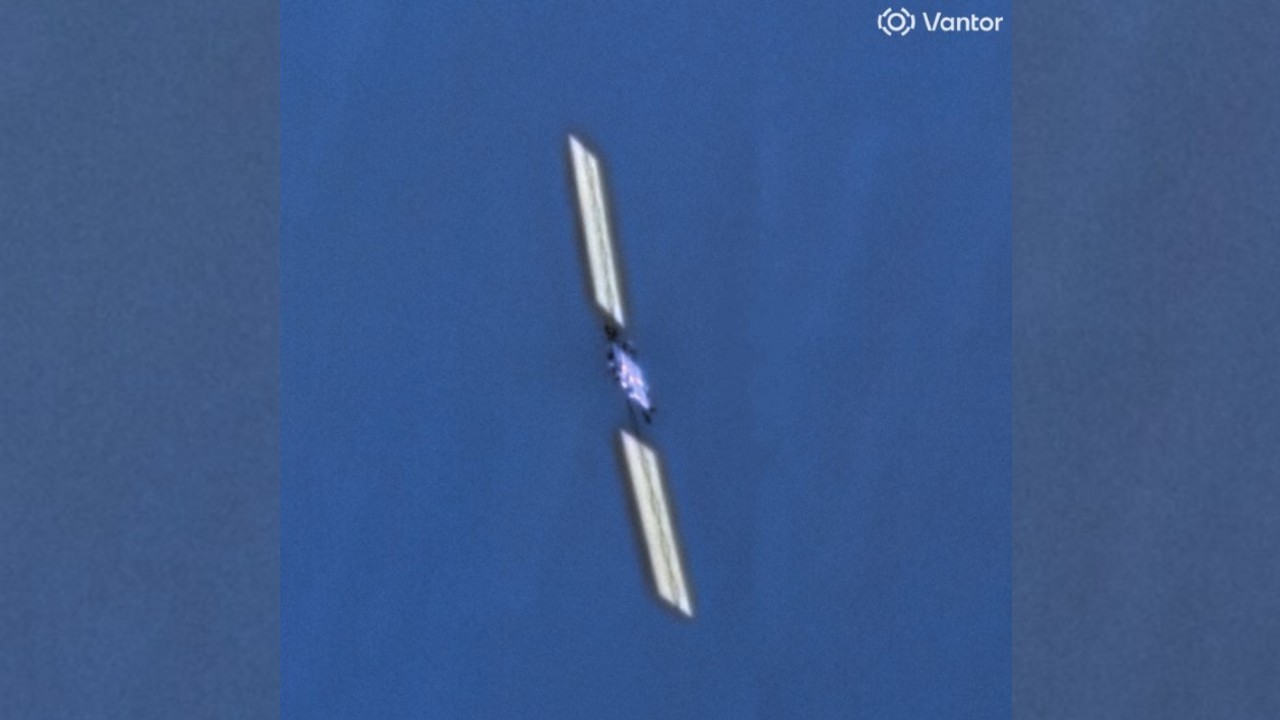Orbital Outposts: A Better Bet than a Moonbase?
Because weare planetary creatures, most people assume the first and most numerous spacesettlements must be on the Moon or Mars. In fact, we may live in orbit longbefore settling the Moon or Mars, and there may always be far more spacesettlers in orbit than on any planet or moon. Orbital settlementsare huge spacecraft, big enough for many thousands to live in comfortably, thatprovide radiation protection, a breathable atmosphere, nearly self-sufficientlife support, and that rotate to provide something that feels much likeEarth-normal gravity at the rim.
Why do I think orbitalsettlements will precede and vastly outperform those on planets and moons?Three reasons:
- It's easier.
- There's more.
- The kids will be able to visit Earth
It's Easier
Gettingback and forth to orbit is far easier than getting to the Moon or Mars, whichis why we've had space stations circling Earth for thirty years and have yet tosee the first base on the Moon much less on Mars.
Location is also criticalfor economic self-sufficiency. Thriving communities beyond Earth can't be anendless drain on Earth's economy, and settlements in Earth Orbit can provideenergy, exotic materials, and a tourist destination for earthlings. Nearlyunlimited, clean, electrical power can be provided by giant solar arrays inorbit that beam energy to Earth. Asteroids in orbit near Earth have vastquantities of valuable metals -- one small Earth-approaching asteroid has beenvalued at $20 trillion! Finally, Earth orbit is already a tourist destination,and studies suggest that the space tourist market is around $50 billion/year(five million flights at $10,000 per).
In most orbits there is acontinuous supply of solar energy. Even settlements in Low Earth Orbit (LEO)only lack sunlight for 40 minutes at a time and can be supplied by energybeamed from solar power satellites in sunnier orbits. The Moon's night is twoweeks long! Mars has reasonable length nights, but features dust storms, anatmosphere, and is much further from the Sun requiring much larger arrays forthe same power. Nuclear power is fine for small bases and short stays, but fora civilization of millions, importing nuclear fuel from Earth is completelyimpractical. Local sources of fuel must be found and mining, separation,transportation, and processing may be more difficult than bringing lunar orasteroidal materials to Earth orbit.
Finally, there is a smoothpath from where we are now to orbital settlements. Today we have theInternational Space Station (ISS) in orbit and Bigelow Aerospace is flyingGenesis I, the first privately financed space station. Bigelow has alsocommitted to flying a private station capable of hosting three people within afew years. It's not a big step from these stations to the first space hotels. Whenspace hotels get larger and more elaborate, it may make sense to rotate partsof them to gain pseudo-gravity just to simplify certain aspects of living(think bathroom). From there, it's a short step to low-g facilities for thehandicapped -- no wheelchairs needed. Long-term employees of these facilitiesmay decide they'd like to stay in orbit rather than return home. Maids andbell boys may well be the first space settlers!
It's More
On planetsyou live on the outside of a massive, solid sphere. Orbital settlements arehollow: you live on the inside. The single largest asteroid, Ceres, providesenough materials to build orbital space colonies with 1g living area equal toat least a hundred times the surface area of Earth. Orbital space settlementwill be the greatest expansion of life ever.
Breaking space news, the latest updates on rocket launches, skywatching events and more!
This has tremendousimplications. The Earth holds about six and a half billion people at present,and is considered very crowded. However, most of our planet's surface is nearlyuninhabited. The oceans, the frozen wastes of Alaska, Canada, and Siberia, and thevast deserts of Africa, the Middle East, central Asia, the western UnitedStates, and Australia have extremely small populations. By contrast, all of anorbital settlement's area can be more-or-less any way we want it, from thetemperature to the rainfall. Orbital space settlement in this solar system can providespace for ten trillion or more human beings living in excellent conditions.
The Kids
All of lifehas evolved under the force of Earth's gravity. The strength of that force playsa major role in the way our bodies work, including the development andmaintenance of human bone and muscle. The potential effects of lower Lunar or Martiang levels are unknown, but a large orbital space settlement can be rotated tohave nearly any pseudo-gravity desired. Children raised in orbital settlementsshould have no problem visiting Earth.
In Conclusion
We can alllook forward to the day when there are thriving communities of human beingsliving and working on the Moon and Mars. However, it may very well be that,long before then, there are vast numbers of settlements in orbit. Starting inEarth orbit, our solar-system-wide civilization will expand to take advantageof near-Earth asteroids, those closer to the sun, and eventually even theMartian moons for materials. Then it's off the asteroid belt for the richestmine of near-weightless materials in the solar system. After that, who knows,the sky is definitely not the limit!
- Top 10 Moon Facts
- NASA Stresses Global Participation in New Lunar Plan
- Return to the Moon: Mending Fences Between Exploration and Science
- NASA Unveils Strategy for Return to the Moon
- Scientists Gather to Plan Observations from the Moon
- Images: Future Vision: Lunar Base
NOTE: The views of this article are the author's and do not reflect the policies of the National Space Society.
Visit SPACE.com/Ad Astra Online for more news, views and scientific inquiry from the National Space Society.
